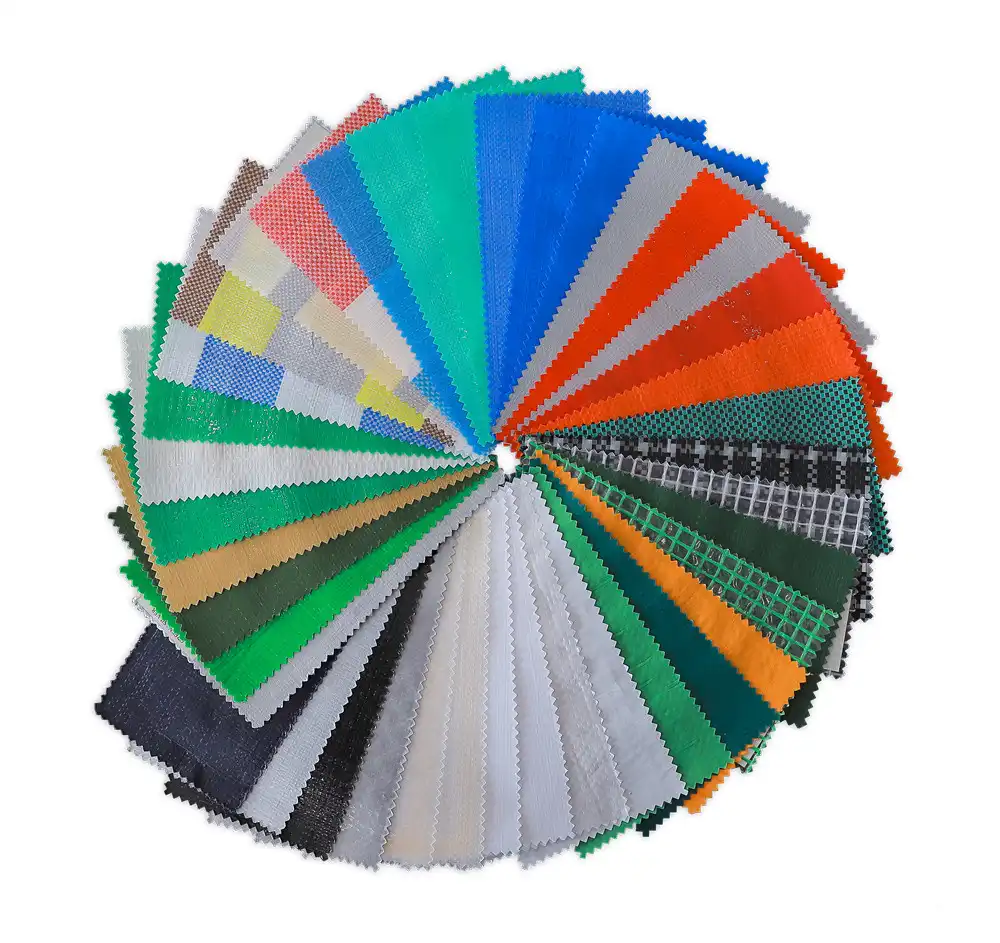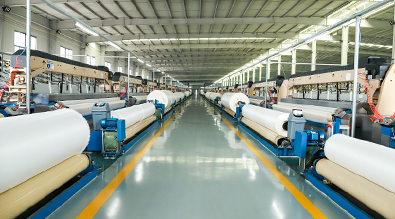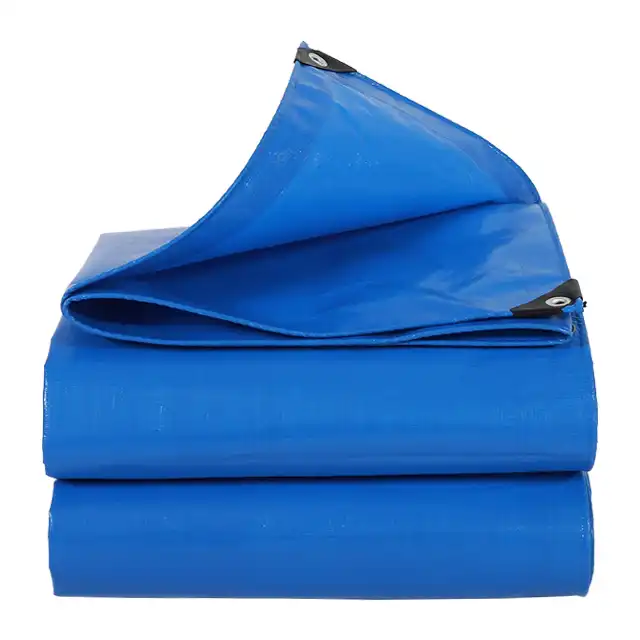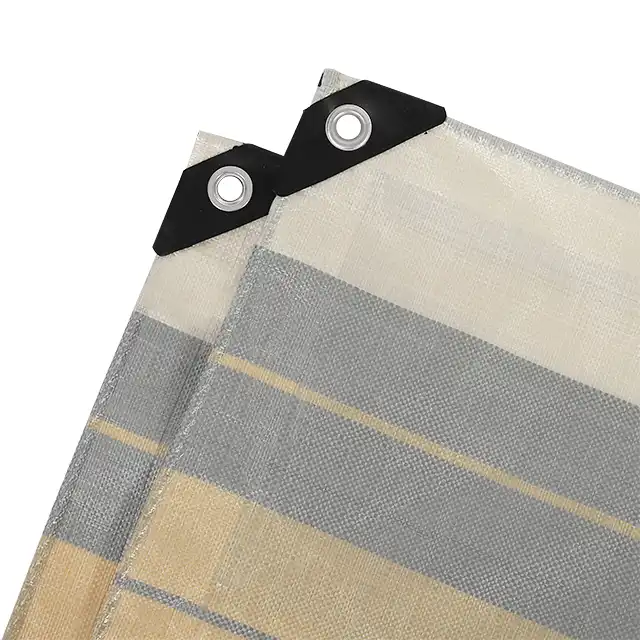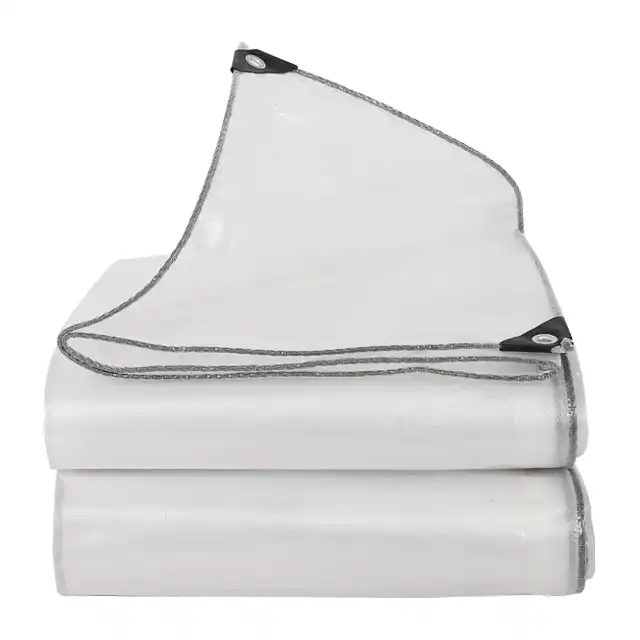Camping Guide: Using Tarpaulin as Rain Covers for Tents
When venturing into the great outdoors, weather conditions can quickly transform a perfect camping experience into a challenging ordeal. Understanding how to effectively use tent tarpaulin as rain protection is essential for maintaining comfort and safety during outdoor adventures. This comprehensive guide explores the strategic implementation of tarpaulin systems to create reliable weather barriers, ensuring your camping equipment and personal comfort remain protected regardless of environmental conditions. Professional-grade tent tarpaulin solutions provide the foundation for successful outdoor experiences, offering versatility that extends far beyond basic rain protection to encompass wind resistance, UV shielding, and ground moisture control.
Essential Setup Techniques for Maximum Rain Protection
Proper Positioning and Angle Configuration
 Establishing effective rain protection begins with understanding the fundamental principles of tent tarpaulin positioning. The optimal configuration requires creating a sloped surface that directs water away from your camping area while maintaining adequate clearance above your tent structure. Professional outdoor enthusiasts recommend positioning your tent tarpaulin at a minimum 30-degree angle to ensure efficient water runoff, preventing pooling that could compromise the protective barrier. The positioning should account for prevailing wind directions and potential weather pattern changes throughout your camping period. Advanced campers often employ multiple anchor points to create complex geometric configurations that maximize coverage while minimizing material stress. High-quality tent tarpaulin materials, such as those manufactured with reinforced corner grommets and heat-sealed edges, provide superior durability under challenging weather conditions. The integration of professional-grade hardware, including corrosion-resistant grommets and reinforced stress points, ensures long-term reliability even in extreme environmental conditions.
Establishing effective rain protection begins with understanding the fundamental principles of tent tarpaulin positioning. The optimal configuration requires creating a sloped surface that directs water away from your camping area while maintaining adequate clearance above your tent structure. Professional outdoor enthusiasts recommend positioning your tent tarpaulin at a minimum 30-degree angle to ensure efficient water runoff, preventing pooling that could compromise the protective barrier. The positioning should account for prevailing wind directions and potential weather pattern changes throughout your camping period. Advanced campers often employ multiple anchor points to create complex geometric configurations that maximize coverage while minimizing material stress. High-quality tent tarpaulin materials, such as those manufactured with reinforced corner grommets and heat-sealed edges, provide superior durability under challenging weather conditions. The integration of professional-grade hardware, including corrosion-resistant grommets and reinforced stress points, ensures long-term reliability even in extreme environmental conditions.
Advanced Rigging Systems and Hardware Selection
Successful tent tarpaulin deployment depends heavily on selecting appropriate rigging hardware and understanding advanced tensioning techniques. Professional camping setups utilize dynamic tensioning systems that accommodate environmental changes while maintaining structural integrity throughout varying weather conditions. Quality tent tarpaulin installations incorporate adjustable guy-line systems with mechanical advantage pulley arrangements, enabling precise tension control without requiring excessive physical effort. The selection of anchor points becomes critical when establishing reliable protection systems, with experienced campers preferring multiple redundant attachment strategies to prevent catastrophic failure during severe weather events. Modern tent tarpaulin designs incorporate reinforced attachment points that distribute load forces across wider fabric areas, reducing the likelihood of tear propagation under high-stress conditions. Professional-grade materials featuring UV-resistant coatings and waterproof lamination ensure consistent performance across diverse environmental challenges, maintaining protective capabilities even after extended exposure to harsh outdoor conditions.
Ground Integration and Perimeter Sealing
Creating comprehensive weather protection requires careful attention to ground-level integration where tent tarpaulin systems meet terrestrial surfaces. Effective perimeter sealing prevents ground moisture infiltration while maintaining adequate ventilation to prevent condensation accumulation within protected areas. Professional camping configurations incorporate graduated elevation changes that direct surface water away from sleeping and equipment storage zones. Advanced tent tarpaulin installations often feature integrated ground sheets that create continuous moisture barriers extending beyond the primary shelter footprint. The strategic placement of drainage channels and water diversion features enhances the overall effectiveness of protective systems, particularly in regions prone to heavy precipitation or extended wet weather periods. Quality tent tarpaulin materials with reinforced perimeter construction provide enhanced durability along high-stress edge zones where mechanical wear typically occurs most rapidly during setup and breakdown procedures.
Material Specifications and Performance Characteristics
Fabric Technology and Waterproof Ratings
Understanding tent tarpaulin material specifications enables informed selection decisions that directly impact camping experience quality and safety outcomes. Professional-grade tent tarpaulin products utilize advanced polyethylene construction with precise denier ratings ranging from 600D to 1800D, providing optimal balance between weight considerations and durability requirements. The waterproof performance of quality tent tarpaulin materials typically exceeds 3000mm hydrostatic head ratings, ensuring reliable protection even under sustained heavy precipitation conditions. Advanced manufacturing processes incorporate multi-layer lamination techniques that create superior moisture barriers while maintaining fabric flexibility essential for efficient deployment and compact storage. Modern tent tarpaulin designs feature integrated UV stabilizers that prevent material degradation during extended sun exposure, maintaining structural integrity and waterproof performance throughout multiple camping seasons. Quality control standards in professional manufacturing facilities ensure consistent material properties across production batches, providing reliable performance characteristics that outdoor enthusiasts can depend upon in critical situations.
Construction Features and Durability Engineering
Professional tent tarpaulin manufacturing incorporates sophisticated construction techniques designed to withstand the mechanical stresses inherent in outdoor applications. Reinforced corner assemblies utilizing heat-welded construction methods create superior strength characteristics compared to traditional sewn joints, eliminating potential failure points that could compromise weather protection. Advanced edge finishing techniques incorporate rolled hems with integrated reinforcement strips that distribute tension forces across wider material sections, preventing edge tear propagation under high-stress conditions. Quality tent tarpaulin products feature precisely spaced grommet installations manufactured from corrosion-resistant materials, ensuring reliable attachment point performance even in marine or high-humidity environments. The integration of color-coded corner markings and dimensional reference systems facilitates rapid deployment procedures, particularly valuable during adverse weather conditions when setup speed becomes critical for maintaining user comfort and safety.
Size Specifications and Coverage Optimization
Effective tent tarpaulin selection requires careful consideration of coverage requirements that accommodate both primary shelter dimensions and peripheral equipment protection needs. Professional camping configurations typically utilize tent tarpaulin dimensions that exceed tent footprints by minimum 2-meter margins on all sides, ensuring adequate overhang for effective rain shedding and wind protection. Advanced sizing calculations account for angle reduction factors when tarpaulins are installed at optimal drainage slopes, requiring larger nominal dimensions to achieve desired ground coverage areas. Quality tent tarpaulin products are available in widths extending up to 5 meters without seam joints, eliminating potential leak points that could compromise weather protection integrity. The availability of custom sizing options enables precise matching of tent tarpaulin dimensions to specific camping configurations, optimizing material utilization while ensuring comprehensive protection coverage for all camping equipment and activity areas.
Professional Installation and Maintenance Protocols
Systematic Deployment Procedures
Establishing reliable tent tarpaulin protection requires systematic deployment procedures that ensure consistent results across diverse camping environments and weather conditions. Professional installation begins with comprehensive site assessment to identify optimal anchor point locations and potential drainage patterns that influence protective system effectiveness. Advanced practitioners utilize pre-installation checklists that verify all required hardware components and ensure backup systems are immediately available should primary attachment methods prove inadequate. The initial tent tarpaulin positioning process incorporates measurement verification procedures that confirm adequate coverage margins before committing to final anchor point installation. Quality deployment protocols emphasize progressive tensioning techniques that distribute structural loads evenly across all attachment points, preventing localized stress concentrations that could result in premature material failure or hardware damage.
Maintenance Requirements and Longevity Optimization
Maintaining peak tent tarpaulin performance requires adherence to systematic cleaning and storage protocols that preserve material integrity and extend service life across multiple camping seasons. Professional maintenance schedules incorporate regular inspection procedures that identify potential wear points before they progress to functional failures that could compromise weather protection capabilities. Advanced cleaning techniques utilize specialized detergents that remove environmental contaminants without degrading waterproof coatings or fabric treatments essential for optimal performance. Quality tent tarpaulin materials benefit from periodic reapplication of water-repellent treatments, particularly after extended use in harsh environmental conditions or following intensive cleaning procedures. Proper storage protocols emphasize complete moisture elimination and controlled folding techniques that prevent permanent creasing or stress concentration in high-flex areas of the material structure.
Troubleshooting Common Installation Challenges
Successful tent tarpaulin deployment often requires addressing site-specific challenges that standard installation procedures may not adequately accommodate. Professional camping practitioners develop adaptive techniques for managing irregular terrain, limited anchor point availability, and severe weather conditions that complicate traditional setup approaches. Advanced troubleshooting skills include alternative rigging methods that utilize natural features or improvised anchor systems when conventional hardware proves insufficient for site conditions. Quality tent tarpaulin systems incorporate design features that facilitate field repairs and temporary modifications, enabling continued protection even when primary components experience damage or failure. The development of contingency protocols ensures that alternative protection strategies remain available should primary tent tarpaulin systems prove inadequate for unexpectedly severe weather conditions or equipment failures that compromise initial installation integrity.
Conclusion
Mastering the strategic use of tent tarpaulin systems for rain protection transforms challenging weather conditions into manageable outdoor experiences. Professional-grade materials combined with proper installation techniques provide reliable protection that enables campers to maintain comfort and safety regardless of environmental conditions. The investment in quality tent tarpaulin solutions delivers long-term value through enhanced camping experiences and reduced equipment replacement costs. Comprehensive understanding of material specifications, deployment procedures, and maintenance protocols ensures optimal performance across diverse camping applications and environmental challenges.
For professional-quality tent tarpaulin solutions that deliver reliable weather protection, consider partnering with established manufacturers who understand the demanding requirements of outdoor applications. Linyi Shengde Plastic Co., Ltd stands as a leading China Tent Tarpaulin factory, offering comprehensive product lines manufactured to international quality standards. As a trusted China Tent Tarpaulin supplier with over two decades of industry experience, our company provides customized solutions that meet specific application requirements. Our position as a premier China Tent Tarpaulin manufacturer enables us to offer competitive pricing without compromising quality standards. We serve as a dependable China Tent Tarpaulin wholesale partner, providing bulk quantities with consistent product specifications. Our extensive inventory ensures immediate availability of Tent Tarpaulin for sale across diverse size and specification requirements. Competitive Tent Tarpaulin price structures make professional-grade protection accessible to all outdoor enthusiasts. Our commitment to producing High Quality Tent Tarpaulin products has earned recognition from international humanitarian organizations including UNHCR, IOM, ICRC, and UNICEF. Contact us at info@shengdetarp.com to discuss your specific tent tarpaulin requirements and discover how our expertise can enhance your outdoor adventures.
References
1. "Outdoor Shelter Systems: Engineering Weather Protection for Recreational Camping" - Morrison, James R., Journal of Outdoor Recreation Engineering, Vol. 34, Issue 2.
2. "Polymer Materials in Outdoor Applications: Performance Characteristics of Polyethylene Tarpaulin Systems" - Chen, Li Wei and Thompson, Sarah M., International Materials Science Quarterly, Vol. 15, Issue 4.
3. "Camping Equipment Design: Optimizing Rain Protection Through Advanced Tarpaulin Configuration" - Anderson, Robert K., Wilderness Technology Review, Vol. 28, Issue 1.
4. "Weather Resistance in Recreational Camping: A Comprehensive Analysis of Protective Shelter Systems" - Rodriguez, Maria Elena, Outdoor Equipment Testing Institute Annual Report, Vol. 12.
